



Simulate setup U_RL_Af_Bf
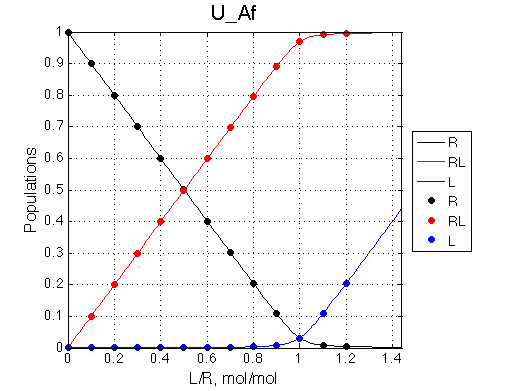
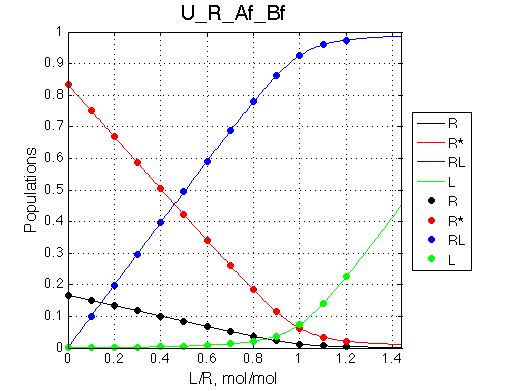
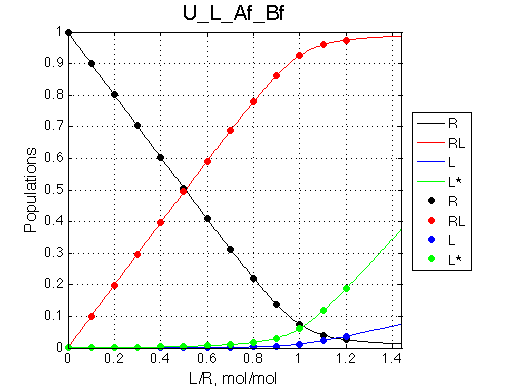
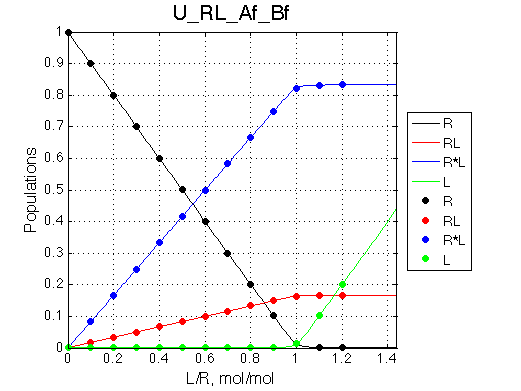
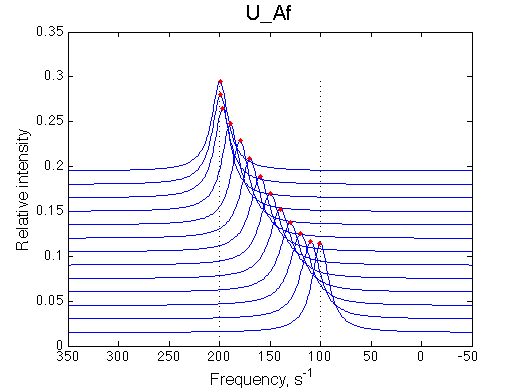
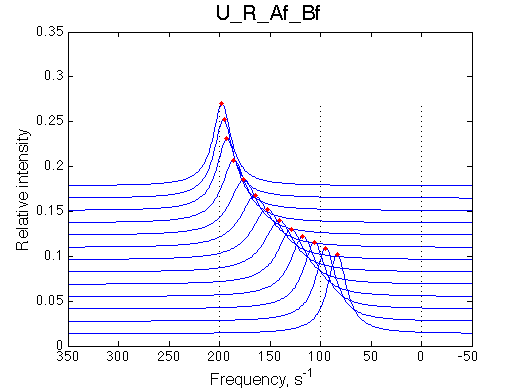
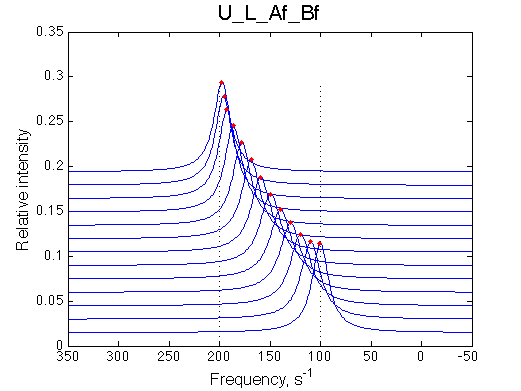
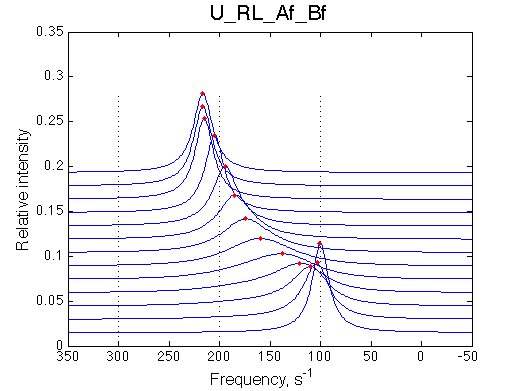
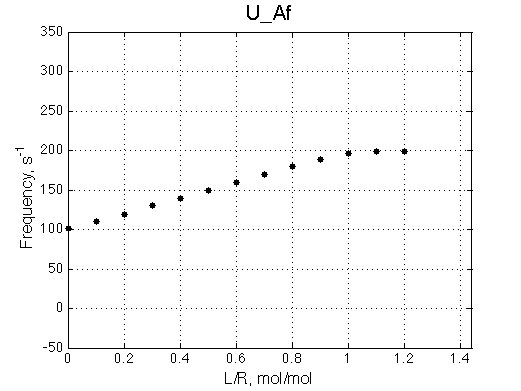
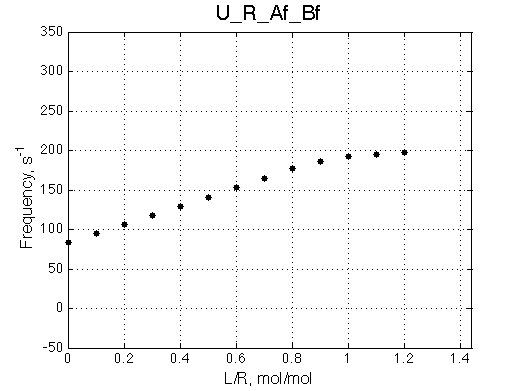
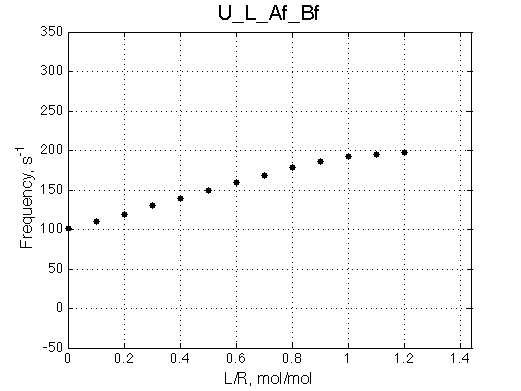
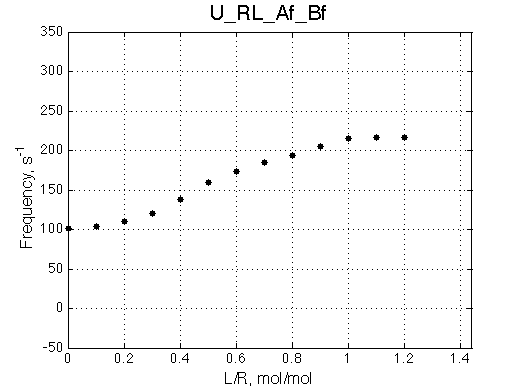

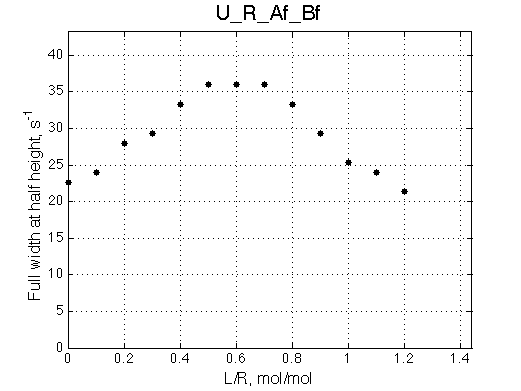
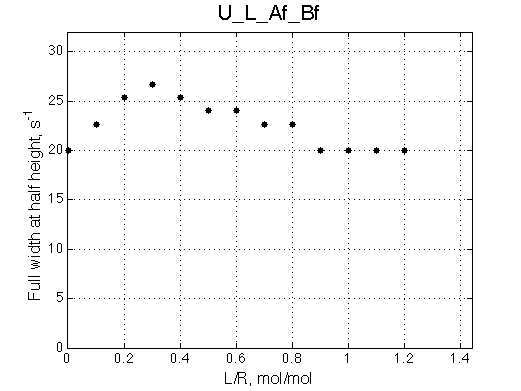

Lets fit all these cases with the 2-site model

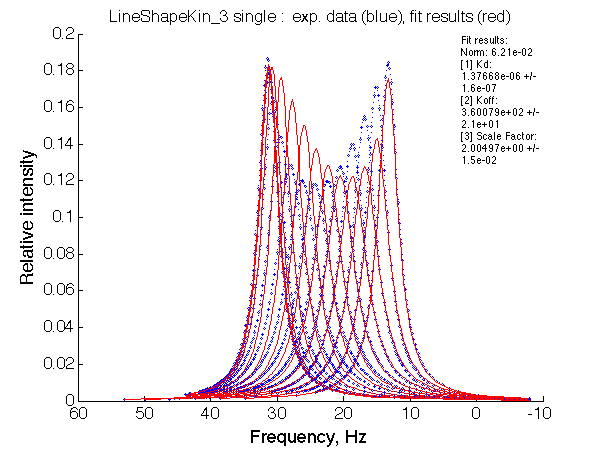


[1] Kd: 5.93180e-07 +/- 1.6e-08 pre-set Kd=1e-6
[2] Koff: 5.17793e+02 +/- 5.6e+00 pre-set Koff=500
[3] Scale Factor: 2.04803e+00 +/- 1.9e-03
[1] Kd: 1.37668e-06 +/- 1.6e-07
[2] Koff: 3.60079e+02 +/- 2.1e+01
[3] Scale Factor: 2.00497e+00 +/- 1.5e-02
[1] Kd: 1.83048e-06 +/- 7.2e-08
[2] Koff: 4.94915e+02 +/- 1.5e+01
[3] Scale Factor: 2.04637e+00 +/- 5.5e-03
[1] Kd: 1.23120e-07 +/- 1.8e-08
[2] Koff: 7.36641e+01 +/- 6.5e-01
[3] Scale Factor: 2.09303e+00 +/- 4.3e-03